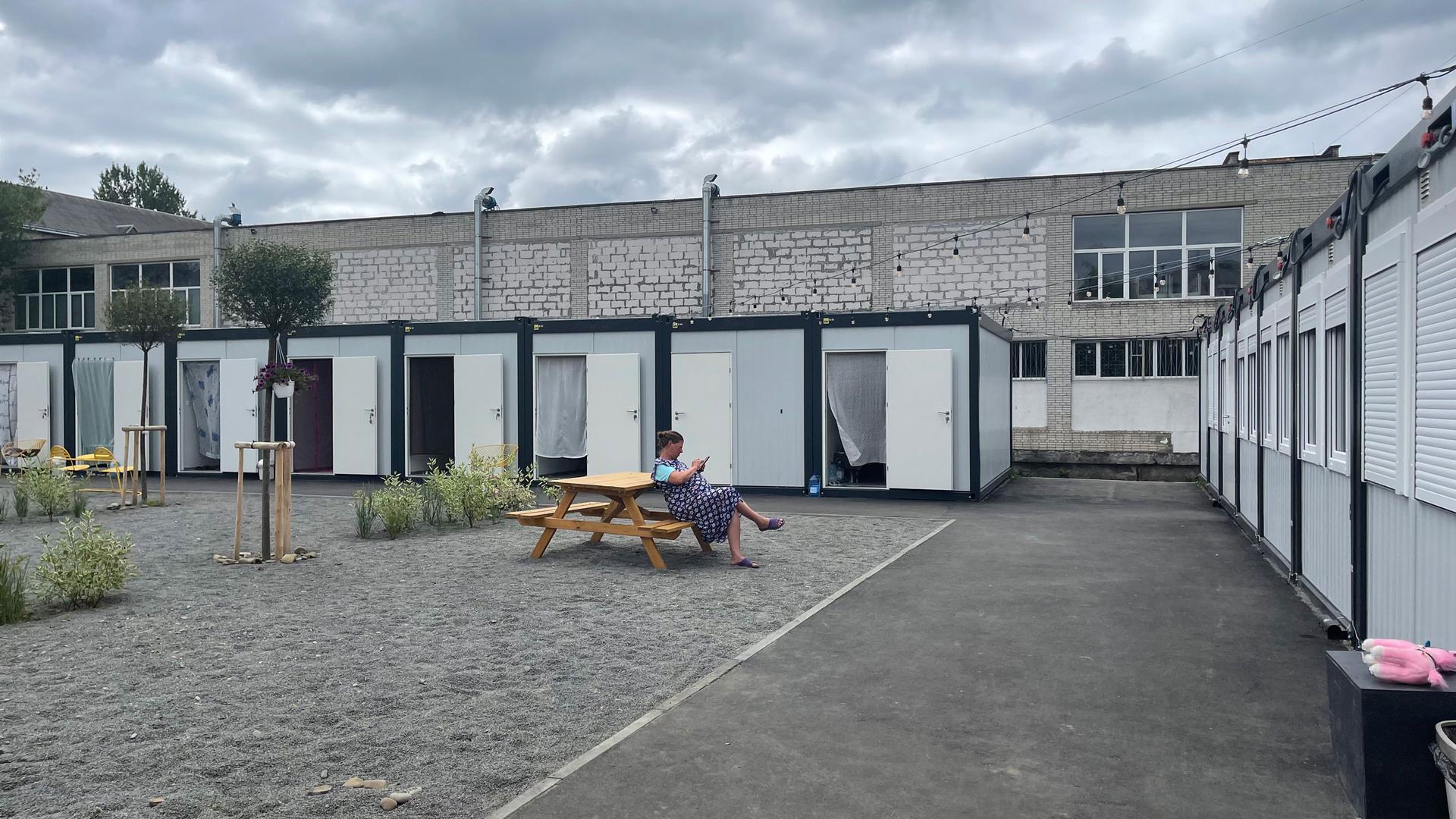With some 7 million internally displaced people in Ukraine since Russia first invaded in February, affordable housing is top of mind.
Hundreds of thousands of displaced people have ended up in the western Ukrainian city of Lviv, near the Polish border, where prefabricated homes have become a fast and affordable way for the city to house refugees.
“We want people to feel like they have a home,” said Viktor Gabitov, the administrator for Modular Housing Village Number 4 and a refugee himself from Odessa.
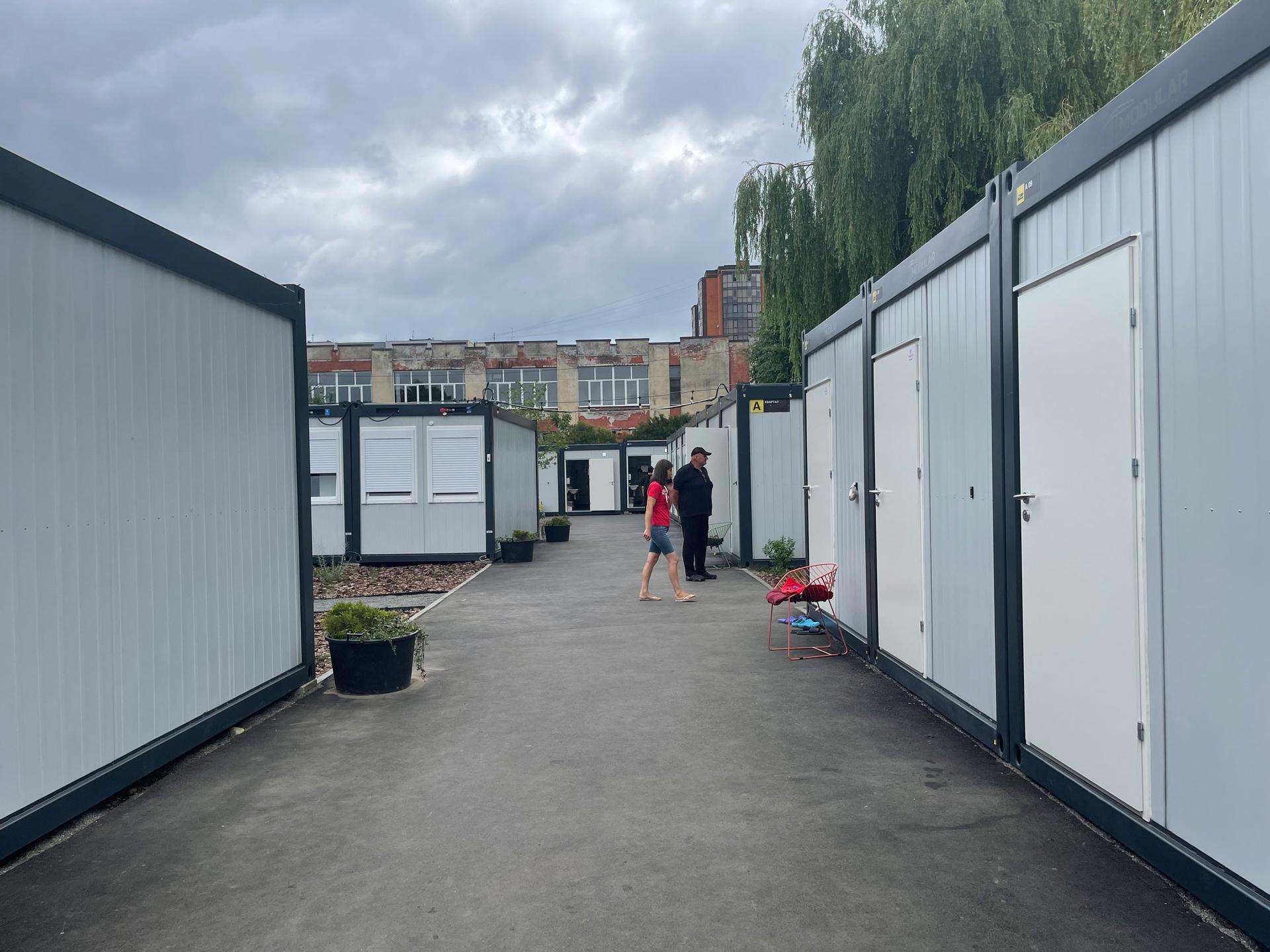
Tucked behind the National Forestry University of Ukraine, about 20 minutes southwest of Lviv’s city center, the manufactured village of gray-paneled shipping containers sits neatly in two, large square sections.
Inlined by a concrete sidewalk, a common area has been fashioned in the middle with gravel, some trees and play equipment for children.
This particular village holds up to 320 residents and some 260 people live there today, Gabitov said.
“The first wave of refugees were from Kharkiv, Donetsk, and Luhansk oblasts,” he said, noting that many have actually been in Lviv for a while, but were living in places like schools and cinemas and needed better housing.
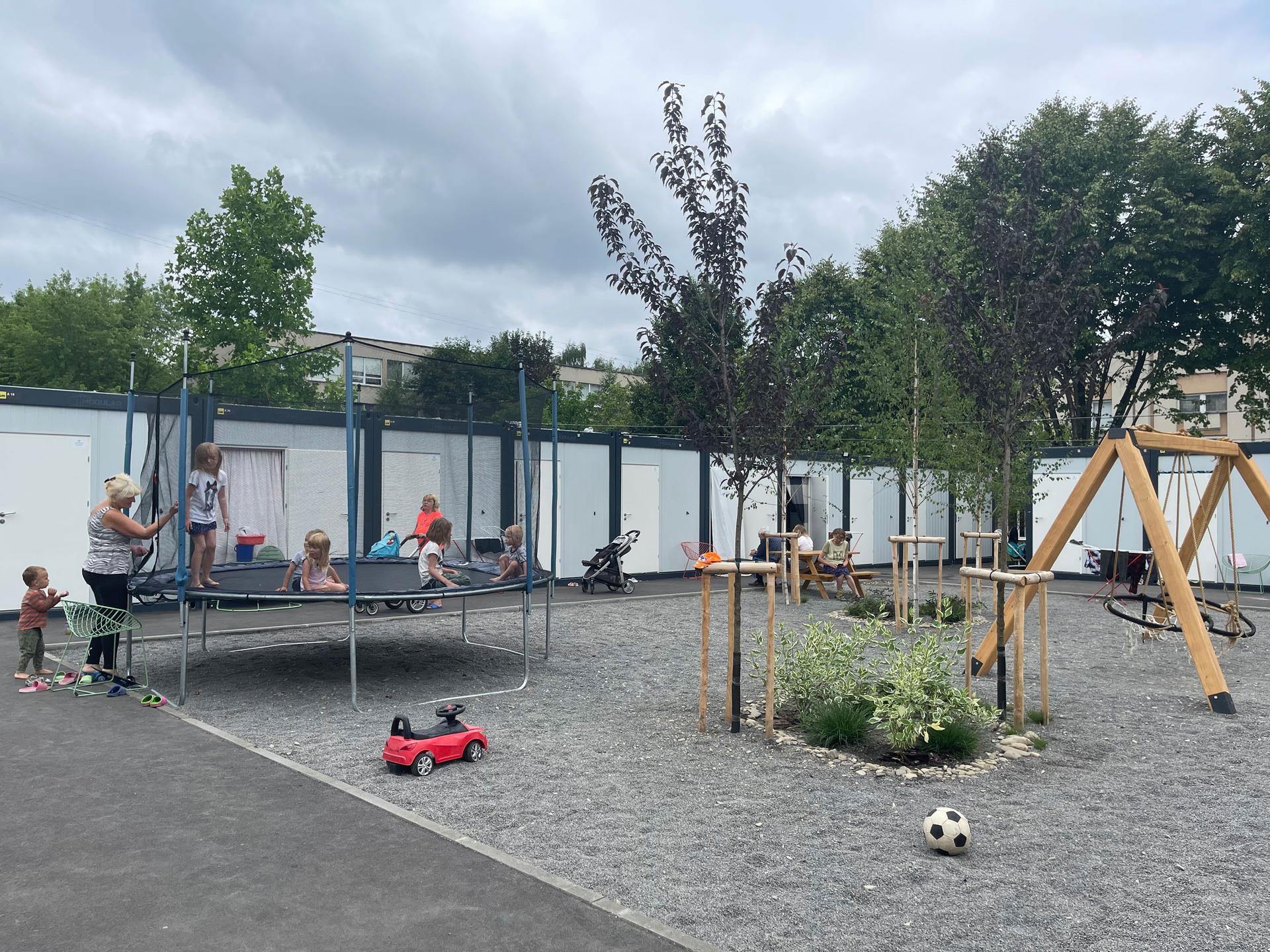
Each module is 130-square feet and includes four beds, shelves and a place to hang clothes. Residents must share bathroom, laundry and kitchen facilities, where they receive one meal a day and can also cook independently.
Resident Natalia Makarvos, 44 of Kherson, said she is thankful to have such a place to live. When she and her 16-year-old daughter first arrived in Lviv in mid-May, they lived with Makarvos’ parents.
“I think it’s the best possible place to stay here in Lviv,” she said. “First of all, it’s from the Lviv government and you can stay here for free.”
Ulia Zhutomirska echoes that sentiment. She arrived in Lviv from Zhytomry Oblash in early March with her three sons.
“I like to stay here. I feel comfortable living here and I’ve already found a job,” she said. “I feel safe here.”
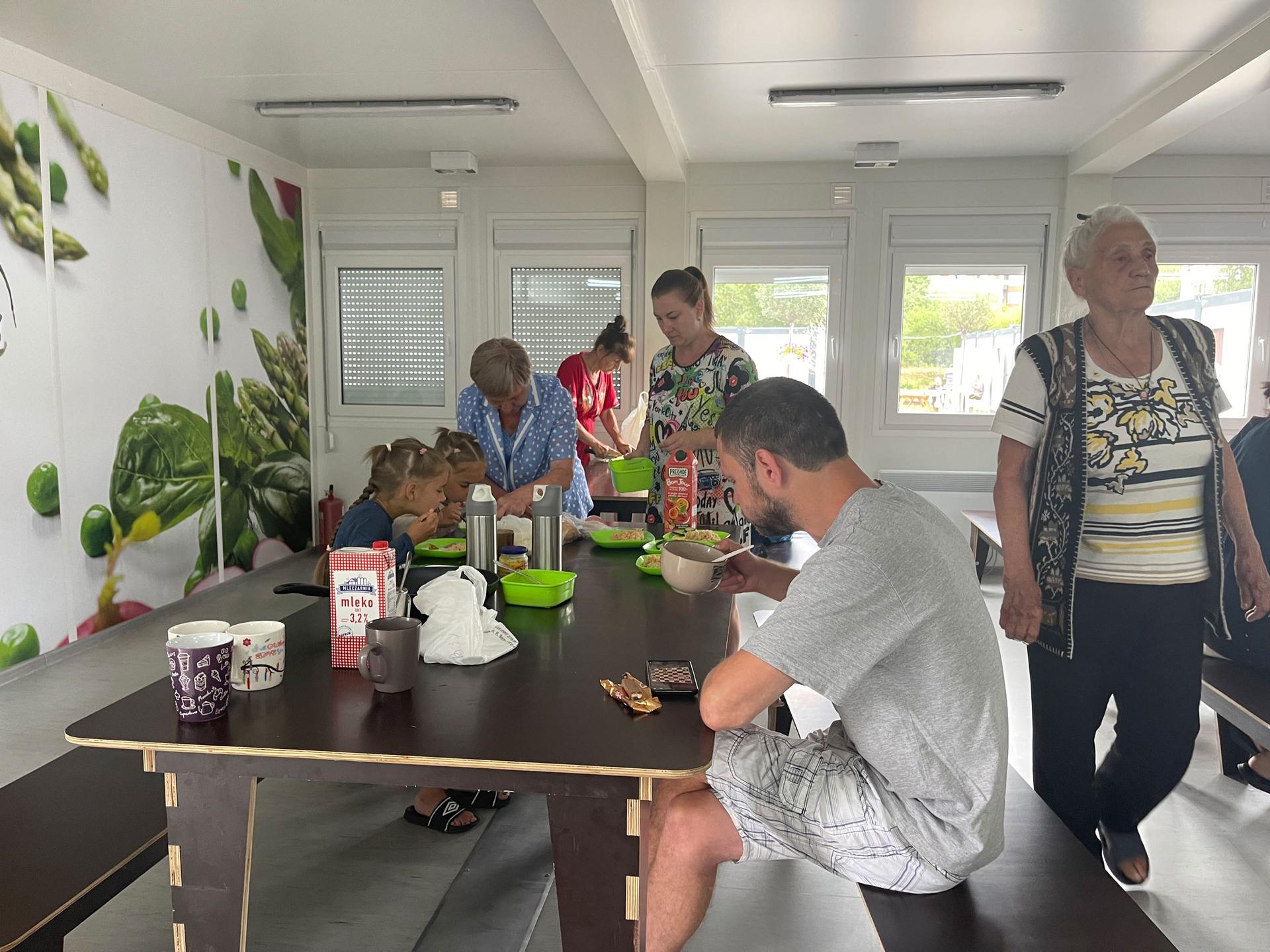
Russia’s invasion of Ukraine has created an unprecedented housing crisis, sending cities, particularly in the west, scrambling to put roofs over people’s heads as their populations ballooned rapidly.
But while prefabricated housing may have been a fast and affordable way to do that, many experts say this is not a long-term housing solution.
When the first prefabricated villages were installed in Lviv, Mayor Andriy Sandoviy praised the plan and suggested it would be for the long-term.
“We estimate that over 500,000 are going to stay longer term. So, we’re going to need to build over a million square meters of housing,” he told Radio Free Europe.
Donated by the Polish government, Lviv’s prefab villages are run by the city and an army of volunteers. They cost about $800 per-square-meter to construct, Lviv chief architect Anton Kolomyeytsev said.
“Maximum effort for minimum money,” he said.
And while these “quality containers” work nicely in the summer, the modules can also be adapted for the winter — which the city is already preparing for, Kolomyeytsev said.
“These are a good temporary solution, they’re very mobile and we can even put one on top of the other and add heated corridors,” he said.
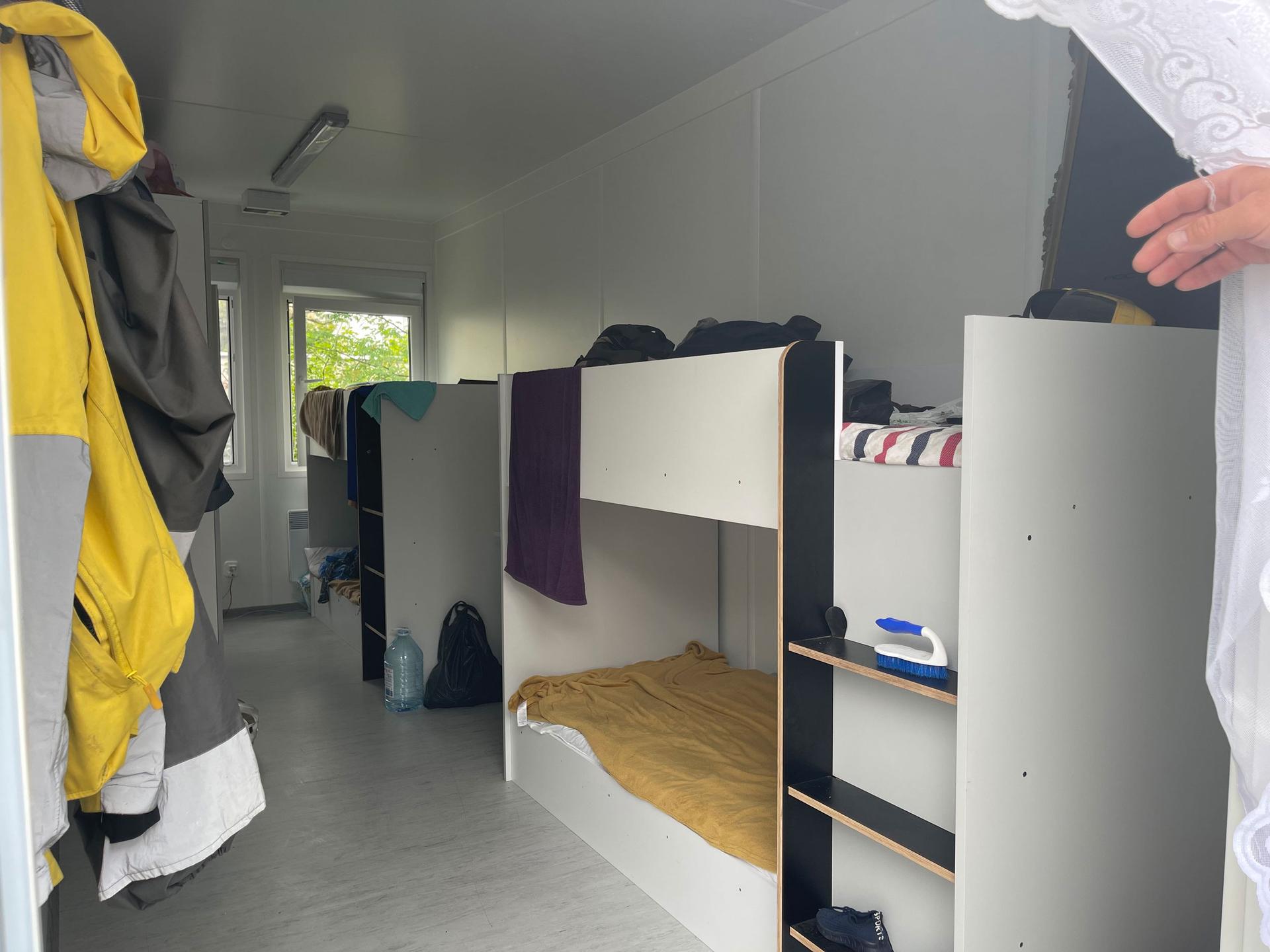
Still, housing advocates and researchers say these shouldn’t replace finding permanent homes for refugees.
The nongovernmental organization Cedos recently released an analysis of how the war has affected housing in Ukraine.
Valeria Lazarenko, a researcher with Cedos, said there are a host of potential problems like the basic level of comfort for families.
“Because it’s basically one room for a family, regardless of how many people, kids and pets that you have,” she said, noting that many people living in modular housing are from areas in Ukraine that could take a very long time to rebuild.
Meanwhile, she worries that the mostly plastic modules are unlikely to provide adequate warmth during the harsh Ukrainian winter.
This housing model has been put into practice before in Ukraine.
Similar modular villages were erected in 2015 in a few cities in the east to house people who fled Crimea and the Donbas. The state promised to eventually provide housing for these refugees, but that housing never came.
The only long-term housing solution is for social housing to be provided by the state, Lazarenko said, but right now there’s no mechanism for that in Ukraine.
“Who will be in charge of it? Who will pay for this? Who and how will manage this housing? These all questions [sic] are still not answered,” she said.
Related: Ukrainian refugees found shelter in Spain’s empty hotels. But then, tourists came back.
